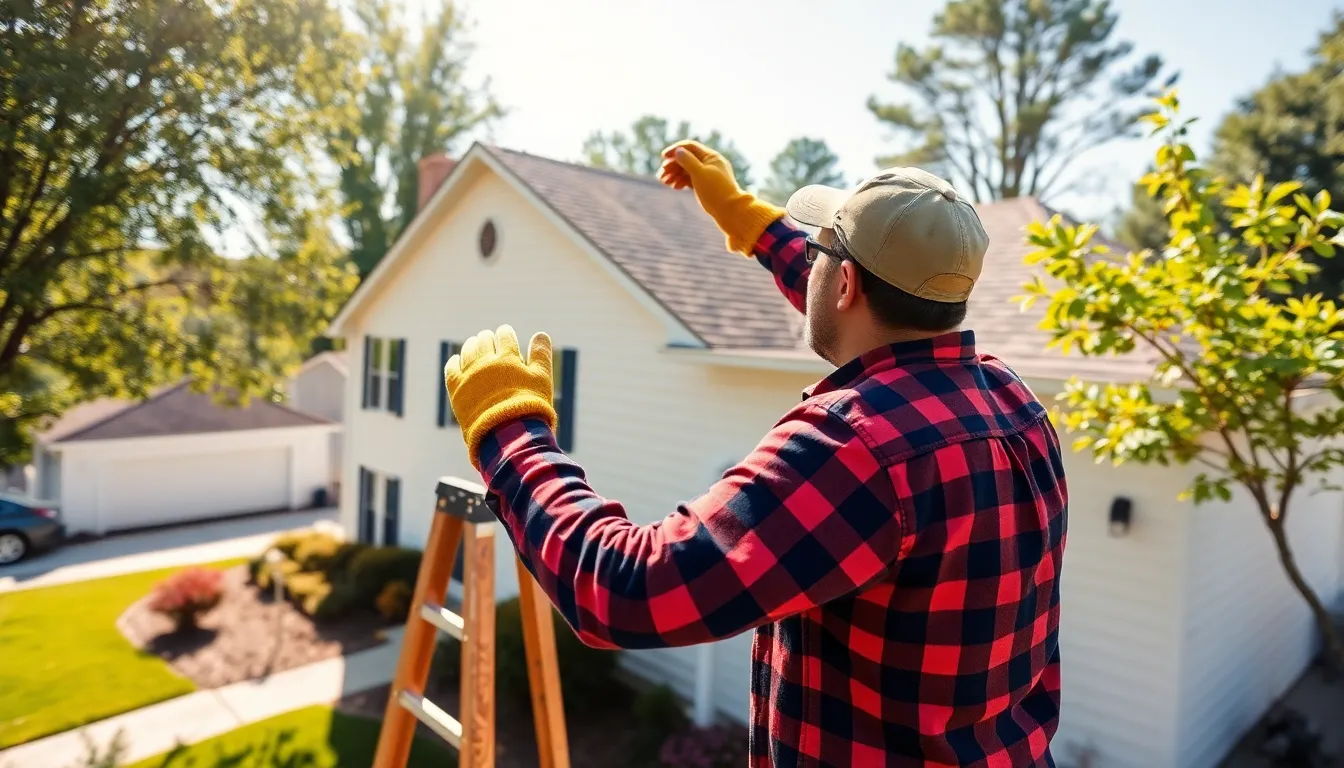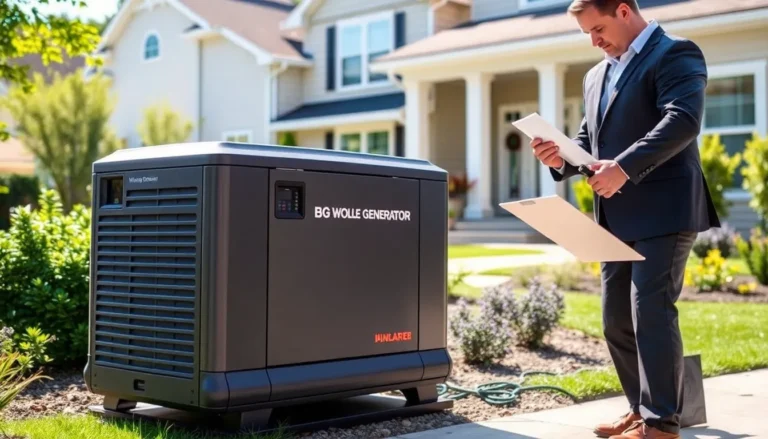Every homeowner knows that ignoring maintenance tasks is like pretending that the monster under the bed doesn’t exist. It’s there, and it’s plotting to wreak havoc on your home! An annual maintenance checklist is the superhero your house desperately needs, swooping in to save the day before small issues turn into costly disasters.
Table of Contents
ToggleImportance Of An Annual Maintenance Checklist
An annual maintenance checklist serves as a vital resource for homeowners. This tool promotes regular maintenance, reducing the risk of unexpected repairs. By identifying potential issues early, homeowners can save on costly fixes down the road. Tracking tasks year after year ensures nothing gets overlooked.
Homeowners benefit from a structured plan that outlines essential tasks. Each item becomes a reminder of what needs attention, whether it’s checking smoke detectors or cleaning gutters. Ignoring these tasks can lead to significant problems, such as water damage or electrical hazards.
Proper home maintenance enhances the property’s value. Homes in good condition attract buyers and maintain equity. Maintaining systems like HVAC or plumbing can extend their lifespan, saving money on replacements.
Safety also improves with regular upkeep. A well-maintained home reduces the chances of accidents, such as slips or fires. Regular checks on appliances and electrical systems ensure they function correctly, minimizing safety risks.
Furthermore, an annual checklist simplifies the maintenance process. Dividing tasks by season makes them manageable, preventing homeowners from feeling overwhelmed. Completing small projects over the year provides a sense of accomplishment, encouraging ongoing maintenance.
Incorporating this checklist as part of a routine fosters awareness of the home’s condition. Awareness leads to proactive measures, addressing issues before they escalate. An annual maintenance checklist ultimately contributes to a safer, more efficient, and valuable home.
Key Components Of An Annual Maintenance Checklist

An annual maintenance checklist consists of essential elements that ensure a home’s upkeep. Homeowners benefit from addressing both inspection items and maintenance tasks regularly.
Inspection Items
Routine inspections identify potential problems before they escalate. Inspect roofing for damage or wear to prevent leaks. Checking gutters ensures proper water drainage, avoiding foundation issues. Homeowners should also evaluate windows and doors for air leaks, enhancing energy efficiency. Heating and cooling systems require evaluation to assess performance and efficiency. Additionally, examining smoke detectors and carbon monoxide alarms for functionality contributes to safety. These inspection items play crucial roles in maintaining property value and safety.
Maintenance Tasks
Conducting regular maintenance tasks preserves a home’s condition. Cleaning HVAC filters enhances airflow and system efficiency. Water heaters require flushing to remove sediment and enhance performance. Homeowners must also lubricate door hinges and locks to maintain functionality. Exterior tasks such as power washing siding and sealing driveways extend material life. Caring for landscaping by trimming trees and bushes prevents potential damage to the home structure. Completing these maintenance tasks promotes longevity and reduces unexpected repair costs.
Benefits Of Regular Maintenance
Regular maintenance provides significant advantages for homeowners. Key benefits include cost savings and increased efficiency.
Cost Savings
Routine maintenance helps minimize expenses over time. Identifying issues early can prevent costly repairs. For example, replacing a small roof leak is much cheaper than addressing water damage due to neglect. Auditing systems like HVAC and plumbing can reduce energy bills by improving performance. Investing in regular upkeep leads to fewer emergencies, lessening the need for urgent repairs. Tracking tasks with an annual checklist enhances awareness, ensuring no issue goes unnoticed. Overall, ongoing maintenance translates into long-term savings for homeowners, making it a wise financial choice.
Increased Efficiency
Regular maintenance boosts the efficiency of home systems. Inspecting HVAC units and cleaning filters enhances airflow, leading to better temperature control and lower energy consumption. Properly sealed windows and doors reduce drafts, fostering a comfortable living environment. Maintaining appliances ensures they operate at peak performance, prolonging their lifespan. An efficient home also provides a more comfortable atmosphere for residents. Utilizing an annual checklist ensures these vital tasks receive attention throughout the year. Prioritizing efficiency not only supports comfort but also encourages responsible energy use.
How To Create An Effective Annual Maintenance Checklist
Creating an effective annual maintenance checklist focuses on identifying essential tasks and prioritizing them appropriately.
Identifying Necessary Tasks
Start by reviewing common household areas that require regular attention. Inspect roofs for damage, check gutters for debris, and evaluate windows and doors for air leaks. Include systems such as heating, cooling, and plumbing in this assessment. Consider appliances requiring maintenance, like water heaters and refrigerators. Regularly testing smoke detectors and carbon monoxide alarms contributes to safety. Identify seasonal tasks, such as cleaning HVAC filters or caring for landscaping, to form a comprehensive list. Consolidating all areas needing attention facilitates efficiency and ensures every necessary task gets addressed.
Prioritizing Maintenance Items
Prioritization ensures the most critical tasks receive attention first. Assess each task based on urgency and potential impact. Tasks that, if neglected, lead to severe damage or safety issues should rank higher. For example, addressing leaky roofs or malfunctioning smoke detectors requires immediate action. Grouping tasks by season helps manage time effectively. Scheduling routine inspections for heating and cooling systems during shoulder seasons, such as spring and fall, allows timely action before extreme weather conditions arrive. Organizing tasks this way enhances efficiency, ensuring everything gets completed without overwhelming effort.
Embracing an annual maintenance checklist is essential for every homeowner. This proactive approach not only safeguards a property’s value but also enhances safety and efficiency. By staying on top of routine inspections and maintenance tasks, homeowners can prevent minor issues from evolving into costly repairs.
Regular upkeep ensures that vital systems function optimally and reduces energy expenses. Moreover it fosters a sense of responsibility toward the home, creating a comfortable living environment. With a well-structured checklist in hand, managing home maintenance becomes a streamlined process, making it easier to tackle seasonal tasks without feeling overwhelmed. Prioritizing these efforts leads to a safer and more valuable home for years to come.


